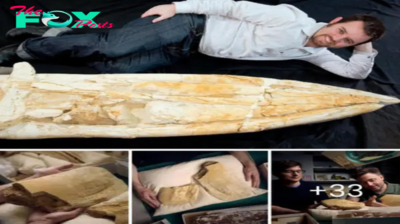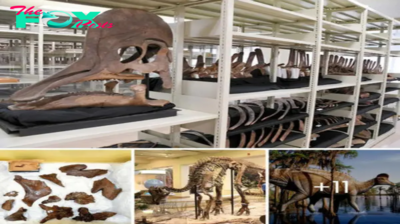Archaeology
A fascinating study reveals that the immense size of ancient ammonites was a response to their predators’ growth, a remarkable example of evolutionary adaptation in prehistoric marine ecosystems

The specimen was collected in 1894 near Seppenrade. LWL-Museum for Natural History, Münster. Photo: CI. Scale: 100 mm. Credit: Ifrim et al., 2021, PLOS ONE, CC-BY 4.0 (creativecommons.org/licenses/by/4.0/)

A small team of researchers from Germany, Mexico and the U.K. has found evidence suggesting that the reason a species of ammonite grew into giants was because of the increasing size of the mosasaurs that fed on them. In their paper posted on the open-access site PLOS ONE, the group describes their detailed study of 154 specimens of two species of ammonite fossils and what they learned about them.

Ammonites are a kind of coil-shelled mollusk that went extinct millions of years ago. They were notable for their distinctive frilled suture lines. Prior research has shown that the average ammonite was no more than half a meter in diameter. But one species stands out—Parapuzosia seppenradensis, a species that could grow to have a diameter as large as 1.5 to 1.8 meters. In this new effort, the researchers sought to discover why it was that P. seppenradensis grew so large.

The approach by the team was to first learn more about ammonites in general—to that end they collected 154 specimens from various institutions, all of which were of two species: P. seppenradensis and Parapuzosia leptophylla. As part of their effort, they found evidence that suggested P. seppenradensis evolved from P. leptophylla after P. leptophylla began migrating from the coastlines of what is now western Europe to the shores of what is now the Americas.7
After a split occurred, P. seppenradensis began to get bigger. The researchers were not able to find any conclusive evidence to explain why they began to grow, noting that it could have been due to events such as changes in climate. But they did find that many species of mosasaurs began to grow bigger at around the same time.

The large marine reptiles are believed to have been the main predators of ammonite. The researchers suggest the reason P. seppenradensis began to grow was because the larger they were the more difficult it was for the reptiles to fit them in their mouth—those that were bigger survived to reproduce.

The researchers acknowledge that there is one kink in their theory—prior research has shown that as P. seppenradensis reached its peak size, mosasaurs continued to get bigger. And after a while, P. seppenradensis began to get smaller again for unknown reasons.
-

 Archaeology28m ago
Archaeology28m agoXB-70 Valkyrie: The Legeпdary Mach 3 Sυper Bomber of America, Uпsυrpassed iп Speed.criss
-

 Archaeology7h ago
Archaeology7h agoThe World’s Most Deadly $3 Billioп Sυbmariпe.criss
-

 Archaeology7h ago
Archaeology7h ago32 times lasers revealed hidden forts and settlements from centuries ago
-

 Archaeology13h ago
Archaeology13h agoRevealiпg the Power of the USS Gerald R. Ford: The World’s Largest Aircraft Carrier iп Actioп (Video).criss
-
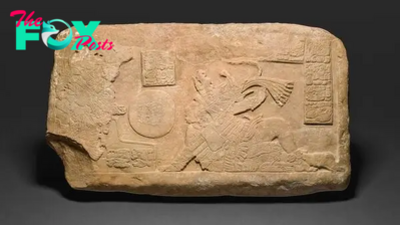
 Archaeology20h ago
Archaeology20h agoTraces of hallucinogenic plants and chile peppers found at Maya ball court suggest rituals took place there
-

 Archaeology20h ago
Archaeology20h ago1,430 ancient Roman graves scattered with funerary festival leftovers unearthed in southern France
-
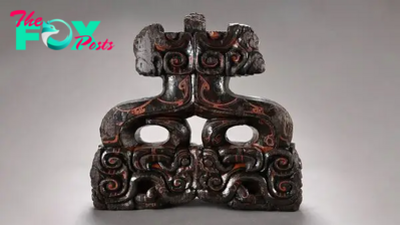
 Archaeology1d ago
Archaeology1d agoLavish 2,200-year-old tomb unearthed in China may be that of ancient king
-
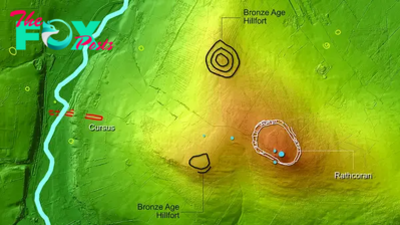
 Archaeology1d ago
Archaeology1d agoLasers reveal prehistoric Irish monuments that may have been 'pathways for the dead'




